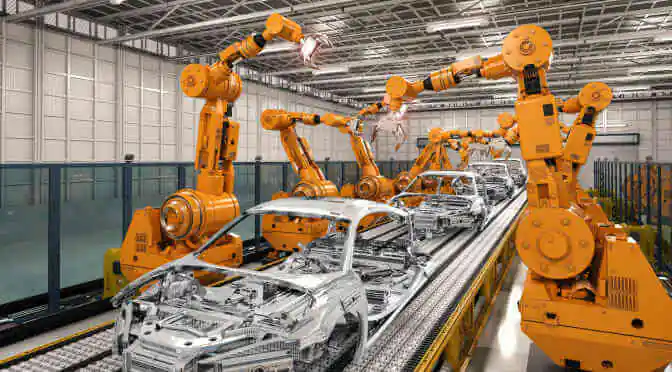A few months ago, we learned that robots are being taught to disobey direct orders from humans. Researchers at the Human-Robot Interaction Lab at Tufts University have been teaching robots how to say no, to develop their artificial reasoning skills.
Around the same time as news of the Tufts research broke, Bloomberg published a story about a German robot that is hitting people, in order to make future machines safer. The purpose here is to ensure that, in environments where people and robots work together, a collision or similar mishap only results in minimal damage to the squishier, weaker human.
According to Bloomberg, there is an industrial robot safety standard, which outlines a 150 newton contact force threshold. However, this standard is pretty broad. For instance, while 150 newtons from a blunt object might feel like a mild slap, this kind of force from a needle is a whole different story.
And as much as people keep making Terminator references—one Daily Mail article bore the headline “Uh oh! Robots are learning to DISOBEY humans: Humanoid machine says no to instructions if it thinks it might be hurt”—teaching robots to think critically and know how much force to use is a really good thing.
Technophobia aside, robots are becoming a bigger part of our everyday lives. Industrial uses are the most obvious and immediate application, but we’re also seeing higher adoption in sectors like defence, logistics, cleaning, construction, rescue and security and medicine, to name a few.
Rehab, for instance, in one area benefitting from the use of robotics. According to a new report from Technavio, the global rehabilitation robots market was valued at $577.1 million in 2015 and is expected to top $1.7 billion by 2020, growing at a cumulative average growth rate of 24.51%.
Introduction of sophisticated exoskeleton robotics
Rehabilitation robots vary greatly in both size and sophistication. One of the more complex versions is HAL, designed by Japanese company Cyberdyne, an exoskeleton that helps improve strength.
Another example is ReWalk, a walking assistance system manufactured in Israel. The machine takes cues from upper body movements to take steps, stop, and sit down.
These are just a few examples of the kinds of robots used as rehabilitation devices. The obvious downside here is the cost of these devices, which don’t run cheap, as well as ever-present safety concerns. But continued work on robotics will no doubt address these issues over the forecast period.



